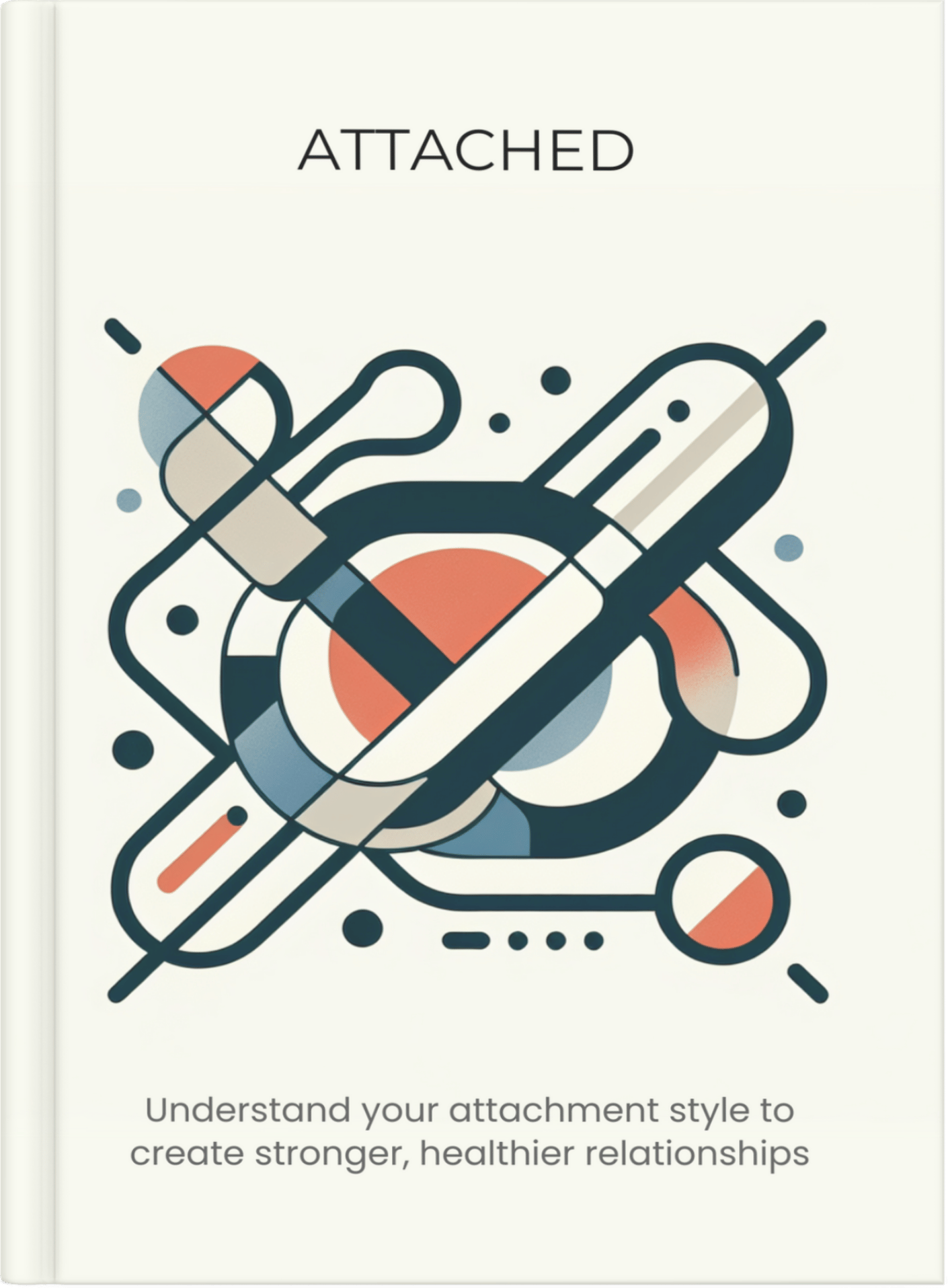
Attached
Amir Levine and Rachel Heller
Attached by Amir Levine and Rachel Heller explores the science of adult attachment and how it influences romantic relationships. The book categorizes people into three main attachment styles: secure, anxious, and avoidant. It provides insights and practical advice on how to navigate relationships based on understanding these attachment styles.
0:000:00
Keypoint 1: Understanding Attachment Styles
Attachment styles are the patterns of behavior and ways of relating to others that we develop in early childhood and carry into our adult relationships. These styles are primarily formed through our interactions with our primary caregivers and can significantly influence how we connect with romantic partners. Understanding attachment styles is crucial because it helps us recognize our own patterns and those of our partners, allowing us to navigate relationships more effectively.
There are three main attachment styles: secure, anxious, and avoidant. Secure attachment is characterized by a healthy balance of intimacy and independence. People with a secure attachment style feel comfortable with closeness and are generally trusting and supportive in relationships. They are able to communicate their needs and feelings openly and are responsive to their partner's needs.
Anxious attachment, on the other hand, is marked by a deep fear of abandonment and a constant need for reassurance. Individuals with this attachment style often worry about their partner's love and commitment, leading to behaviors that can be perceived as clingy or overly dependent. They may have difficulty trusting their partner and often seek constant validation.
Avoidant attachment is characterized by a strong desire for independence and a reluctance to rely on others. People with this attachment style often value their autonomy above all else and may struggle with intimacy and emotional closeness. They tend to keep their partners at a distance and may appear emotionally detached or unresponsive.
Understanding these attachment styles allows us to identify our own tendencies and those of our partners. This awareness can help us address potential issues and improve our relationship dynamics. For example, a person with an anxious attachment style can learn to manage their fears and communicate their needs more effectively, while someone with an avoidant attachment style can work on becoming more comfortable with intimacy and emotional expression. By recognizing and understanding these patterns, we can create healthier, more fulfilling relationships.
There are three main attachment styles: secure, anxious, and avoidant. Secure attachment is characterized by a healthy balance of intimacy and independence. People with a secure attachment style feel comfortable with closeness and are generally trusting and supportive in relationships. They are able to communicate their needs and feelings openly and are responsive to their partner's needs.
Anxious attachment, on the other hand, is marked by a deep fear of abandonment and a constant need for reassurance. Individuals with this attachment style often worry about their partner's love and commitment, leading to behaviors that can be perceived as clingy or overly dependent. They may have difficulty trusting their partner and often seek constant validation.
Avoidant attachment is characterized by a strong desire for independence and a reluctance to rely on others. People with this attachment style often value their autonomy above all else and may struggle with intimacy and emotional closeness. They tend to keep their partners at a distance and may appear emotionally detached or unresponsive.
Understanding these attachment styles allows us to identify our own tendencies and those of our partners. This awareness can help us address potential issues and improve our relationship dynamics. For example, a person with an anxious attachment style can learn to manage their fears and communicate their needs more effectively, while someone with an avoidant attachment style can work on becoming more comfortable with intimacy and emotional expression. By recognizing and understanding these patterns, we can create healthier, more fulfilling relationships.

